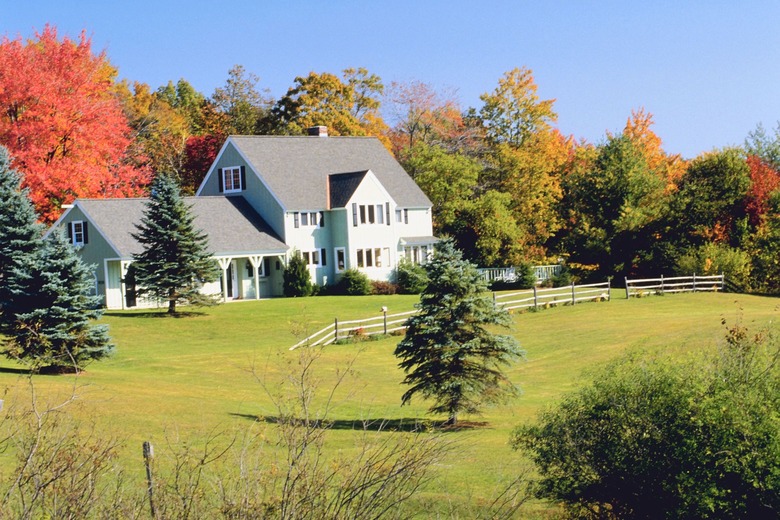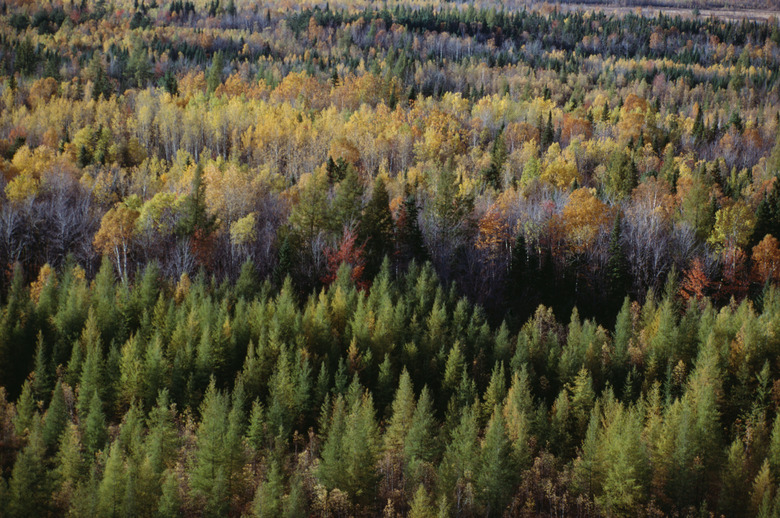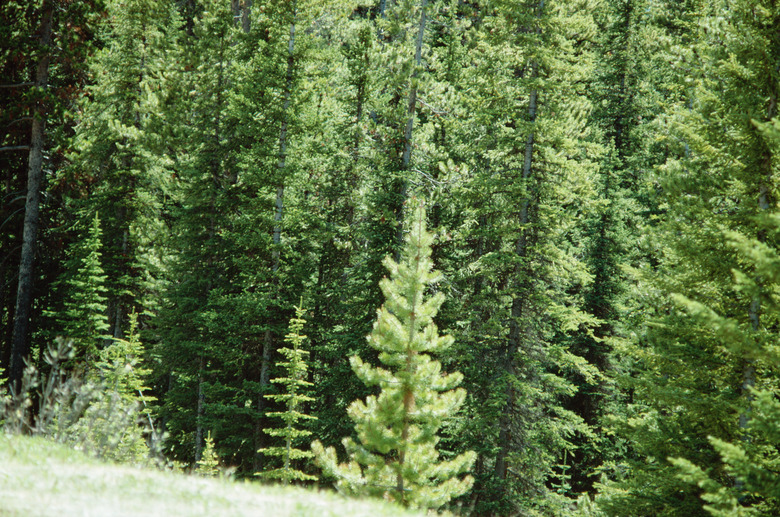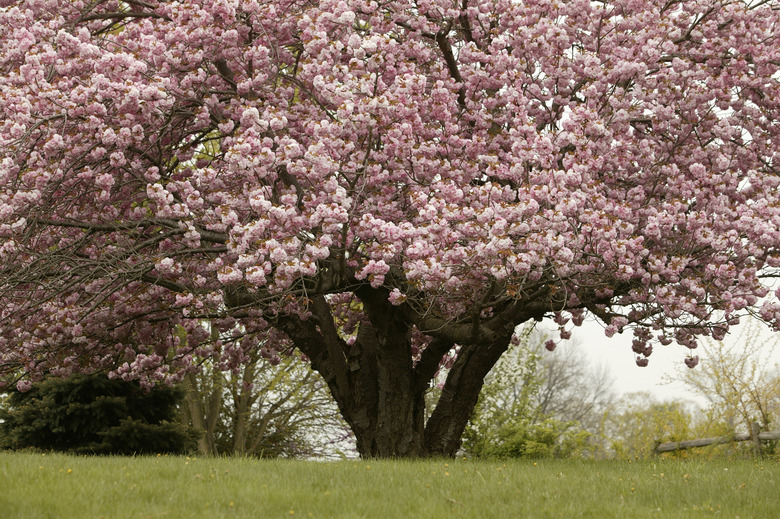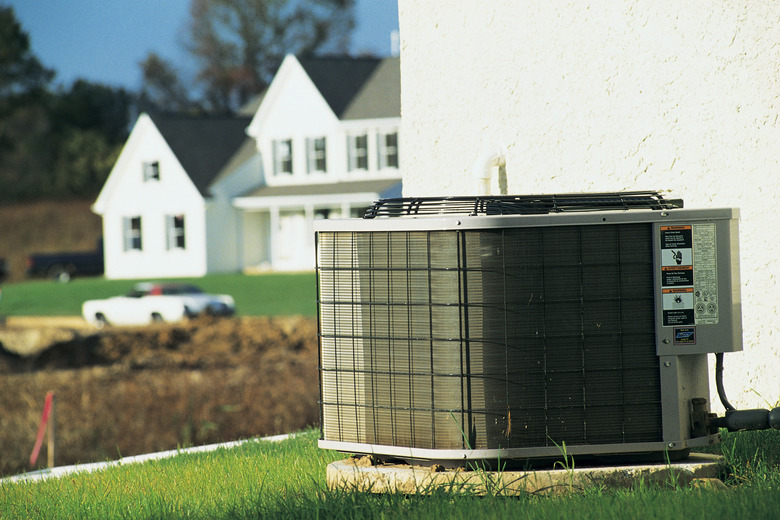The Best Trees To Plant Near A House
A well-landscaped yard can add market value to your home, but a few strategically placed trees can help to drastically reduce your air-conditioning and heating bill by 10 percent to 50 percent. The Arbor Day Foundation suggests planting tall trees such as the maple, oak and spruce or medium-sized trees such as the dogwood and crab apple. Check with your local nursery or university for information on which trees grow best in your area.
Deciduous Trees
Plant deciduous (leaf-loosing) trees around the east, west and south side of your home because these sides of the home receive the most amount of sun in the winter. During the summer months the trees will help to shade the house, which reduces the air-conditioning operating costs.
While there are many deciduous trees to choose from birch, maple, and oak trees are among the most commonly planted trees around the home.
Evergreen Trees
Plant evergreen trees around the north side of your house to help protect your home from the cold winter winds. Blocking northern winds can help shield your home and reduce winter heating bills.
Evergreen trees retain their needles throughout the year, although they will naturally lose needles from time to time. Spruce, firs and pine trees are the most commonly planted evergreen trees around the home.
Flowering or Fruit Trees
Trees that flower or produce fruit can be beautiful to look at and provide food for wildlife. Keep in mind that some trees bloom with flowers whereas others are known for their colorful leaves during the autumn months. Consider what types of wildlife, such as butterflies or birds, you wish to attract to your yard. See Trees-Online.com for a suggested list of flowering trees.
Considerations
Place a tree near the air-conditioning unit to provide cooler air for the intake. Take care to keep the leaves and twigs away from the unit so that it stays in good working order.
Plant trees at various distances away from the house, depending upon the potential size of the tree. Smaller trees that will reach heights up to 25 feet should be planted about 6 to 10 feet away from walls, and 5 to 8 feet away from the corner. Taller trees up to 50 feet should be placed at least 15 to 20 feet away from the wall, and 10 to 15 feet away from the corner.
Avoid planting taller tree varieties near overhead power lines. Plant trees approximately their potential height's distance away from the power lines. Also take into account root growth, making sure that there are no underground utilities that may become damaged from growing roots.
